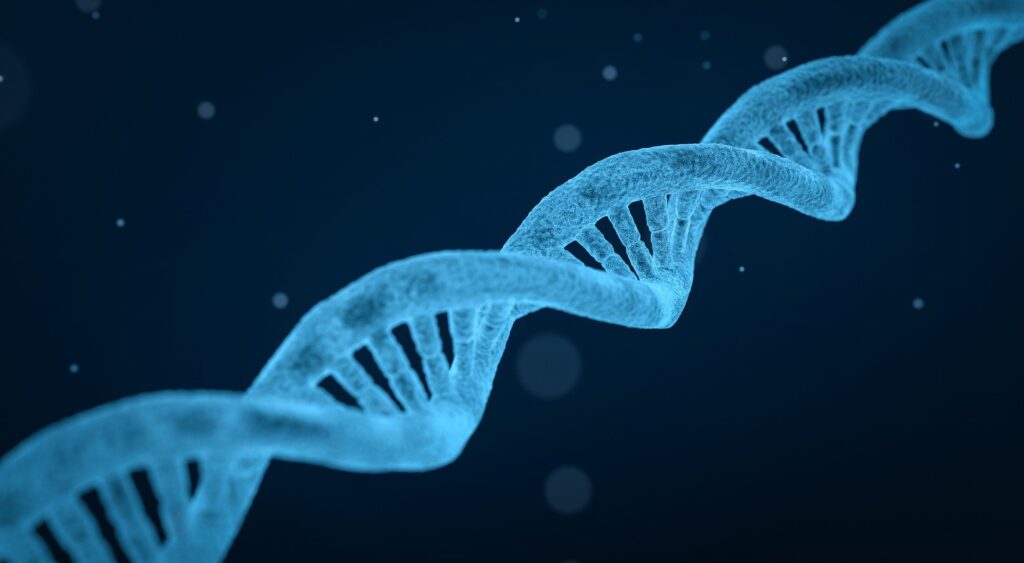Introduction and Principles
Large-scale extraction of phage DNA involves digestion of viral coat proteins using a strong protease such as proteinase K followed by extraction with chloroform. This method is suitable for small-scale preparations as well.
In the experiment, dialysis of bacteriophage suspension is followed by the extraction of phage particles with chloroform: phenol, and ultimately removal of CsCl. The DNA is analyzed and stored for future use. Phenol is used to remove contaminants and undesired proteins from phage suspension, while chloroform denatures the proteins and removes residual phenol. Proteinase K causes the phages’ proteolysis, and SDS separates phage λ DNA from viral proteins and other components, forming a clear solution.
However, while purifying the DNA, keep in mind that vector and recombinant genomes are 43-53kb in size and are prone to shearing.
Materials
Solutions, Enzymes, and Buffers
Chloroform
Dialysis Buffer (prepare two containers with volume 1000 times greater than that of bacteriophage suspension by adding up the following)
Bacterial and Viral Strains
Bacteriophage suspension in Cesium Chloride
Other Equipment
Method
- Transfer the bacteriophage suspension to a section of the dialysis tube closed with a knot or plastic closure at one end. Close the other end of the tube and place it in a flask containing 1000-fold volume excess of dialysis buffer and a magnetic stir bar. Dialyze the bacteriophage suspension with gradual stirring at room temperature for 60 minutes. This step reduces CsCl concentration. The escape of cesium ions can be observed in the form of beautiful Schlieren patterns when the dialysis tube is dipped in the dialysis buffer.
- Transfer the tube to a new buffer flask and dialyze again for another 60 minutes.
- Post dialysis, shift the tube to a centrifuge tube, and the tube must not be more than one-third full.
- Add 0.5M EDTA to this suspension to a final concentration of 20mM.
- Now add proteinase K to a final concentration of 50µg/ml.
- Next, add SDS to achieve a final concentration of 0.5%. Mix the solution by gently inverting the tube multiple times. The bluish color of the solution will readily disappear, and the solution will become transparent. This solution contains viral DNA and proteolysis byproducts.
- Incubate this solution at 56oC for one hour and let it cool to room temperature.
- Add an equal volume of equilibrated phenol to the solution and gently invert the tube several times to mix the organic and aqueous phases and form a complete emulsion.
- Centrifuge the tubes at 5000rpm for 5 minutes at room temperature. Centrifugation will separate the organic and aqueous phases. Carefully, pipette out the aqueous phase and transfer it to a clean tube.
- Using chloroform and phenol mixture in a 1:1 ratio, extract the aqueous phase. Recover the aqueous phase as explained in the previous step and repeat extraction with an equal chloroform volume.
For the preparation of small cultures (50-100ml)
- Precipitate the phage DNA using standard ethanol extraction and store the solution at room temperature for half an hour. After adding ethanol, phage DNA appears in the form of threads in the solution, which can be collected with a Pasteur’s pipette or Shepherd’s crook. Redissolve DNA in TE buffer (pH 7.6). Proceed to analyze and store DNA after skipping the next step.
- Transfer the extracted phase to a dialysis sac and dialyze the bacteriophage solution at 4oC overnight against three times buffer changes. Use 1000 fold TE (pH 8) as dialysis buffer.
- Measure the absorbance at 260nm and calculate DNA concentration.
- Analyze 0.5µg aliquots of DNA that are undigested or have been cleaved with an appropriate restriction enzyme to check the DNA integrity. Also, analyze DNA by gel electrophoresis using 0.7% agarose gel and markers of proper size.
- Store the DNA stock at 4oC.
Precautions
- Vector and recombinant DNA are prone to shearing. Be careful to avoid factors that contribute to the breaking of DNA.
- Phenol is a harmful chemical. It can cause headaches, eye and skin burns, and respiratory irritation. Handle phenol/chloroform carefully, wear gloves and work under the fume hood.
- DNA extraction is a lengthy procedure that requires time, patience, and expertise.
Strengths and Limitations
Phenol: Chloroform is the most popular method of phage DNA extraction. It is cheap and removes contaminants and inhibitors. Extraction of phage DNA by this method provides a high yield. However, this method has several disadvantages as well. It requires expertise and a longer duration to perform. It is a bit hazardous too.
Summary
- We can extract bacteriophage λ DNA on a large and small scale by using proteinase K, SDS, and phenol/chloroform.
- Bacteriophage suspension after dialysis is subjected to extraction with the help of proteinase K and SDS. This step causes proteolysis of the solution and separates viral DNA from proteins and other components.
- The mixture is centrifuged, and the aqueous phase containing DNA is shifted to a new tube, thus removing CsCl from the solution.
- The extracted DNA can be analyzed and stored at 4oC for future use.
References
- Sambrook, J., & Russell, D. W. (2006). Extraction of bacteriophage λ DNA from large-scale cultures using proteinase K and SDS. Cold Spring Harbor Protocols, 2006(1), pdb-prot3972.


